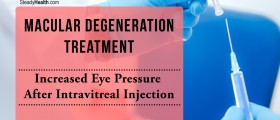Peripheral vision loss is a problem characterized by inability of one to see things to the side or up and down from the central vision. Peripheral vision loss may affect one or both eyes. This loss of vision, particularly if it leaves only central parts of the visual field intact, is frequently termed as tunnel vision.
Causes of Peripheral Vision Loss
Peripheral vision loss may be associated with different eye conditions. However, in the majority of cases such issue is reported in people suffering from glaucoma. Glaucoma is a serious eye condition connected with an increase in intraocular pressure. The increase of pressure inside the eye leads to damage to the optic nerve. Once certain portions of the optic nerve are irreversibly damaged, a person ends up with peripheral vision loss.

Another condition frequently associated with peripheral vision loss is retinitis pigmentosa. This is a hereditary degeneration affecting the retina. Furthermore, retinal detachment may be a cause of peripheral vision loss. The same problem occurs in people suffering from migraines, but in this case the loss of peripheral vision is temporary and occurs only during migraine attack. Finally, even more complex and severe conditions such as stroke and brain tumors may be blamed for this eye problem.
If one has problems with vision filed, he/she is due to consult a health care provider as soon as possible. Under certain circumstance peripheral loss of vision may be a medical emergency, especially if it is associated with additional symptoms and signs such as loss of consciousness, severe headache, garbled/slurred speech, sudden weakness/numbness on one side of the body and eye pain.
- Although the prevalence of low vision due to peripheral field loss (PFL) is not fully known, a survey of vision rehabilitation centers across the U.S. found that 21% of patients had a diagnosis of glaucoma or retinal degeneration.
- Since low vision services are tailored to meet the rehabilitation goals of individual patients, outcome measures to assess the effectiveness of vision rehabilitation are often patient-centered, in the form of patient-reported outcome (PRO) or performance-based outcome measures.
- The study included 37 participants (19 retinitis pigmentosa, 18 glaucoma). Median best-corrected visual acuity for those with RP and glaucoma was 20/40 and 20/27.5, while Pelli-Robson contrast sensitivity was 1.2 log contrast sensitivity (logCS) and 1.1 logCS, respectively. Qualitative interviews identified six vision-related quality of life themes relevant across participants with both RP and glaucoma, including activity limitations, driving, emotional well-being, reading, mobility, and social function.
- All participants cited daily activities that were made difficult because of their vision impairment. Participants also tended to avoid activities that required them to be around a large crowd of people or in unfamiliar places like airports, concert venues, or shopping malls. Most stated that movie theaters were too dark and the screens too large for their limited peripheral vision and some noted that large computer monitors were challenging for the same reason.
- This study builds on prior quantitative and qualitative investigations into the lived experiences of individuals with RP and glaucoma. Quantitative investigations have identified reading, driving, mobility, lighting, and facial recognition as commonly affected tasks in RP, while those with glaucoma experienced impacted mobility, activity limitations, visual symptoms, and socioemotional well-being.
Peripheral Vision Loss and Additional Problems
Peripheral vision loss may occur alone or together with other symptoms and signs depending on the underlying condition one is suffering from.
For instance, there may be halos around lights, photophobia, poor nighttime vision, blood shot eyes, floating objects/flashing lights in one's vision and swelling of one or both eyes.
As far as other symptoms not associated to eyes are concerned, peripheral loss of vision may accompany headaches and occur together with nausea and vomiting.
Certain symptoms point to the presence of life-threatening conditions. If any of the following occur together with peripheral vision loss, one requires immediate medical attention:
(a) change of alertness or loss of consciousness,
(b) changes in mental status,
(c) behavioral changes (e.g. confusion, delirium, hallucinations etc.)
(d) inability to speak,
(e) intensive headache,
(f) sudden change in vision/loss of vision accompanied by eye pain,
(g) sudden weakness/numbness on one side of the body,
(h) slurred/garbled speech.

















Your thoughts on this
Loading...